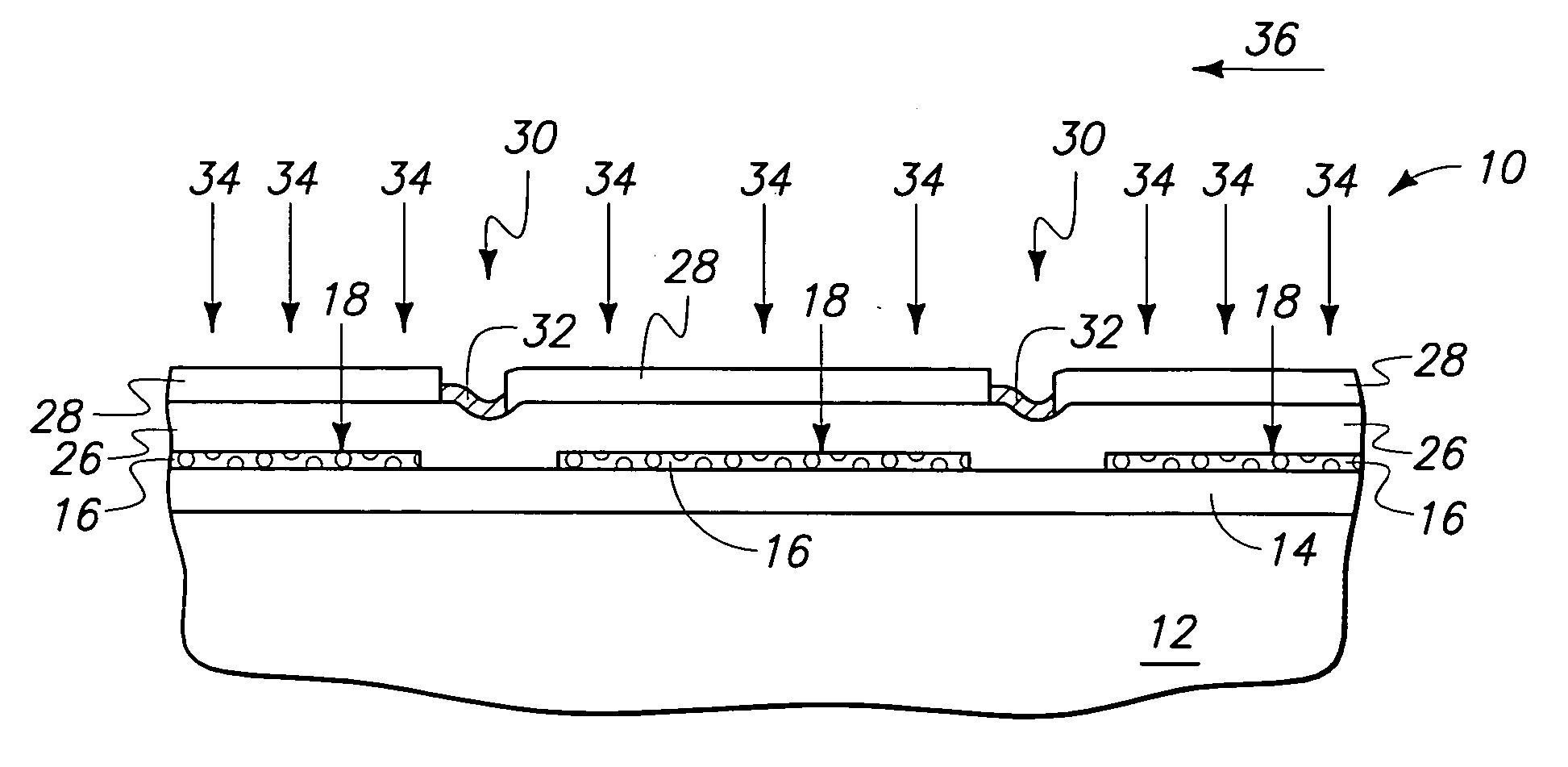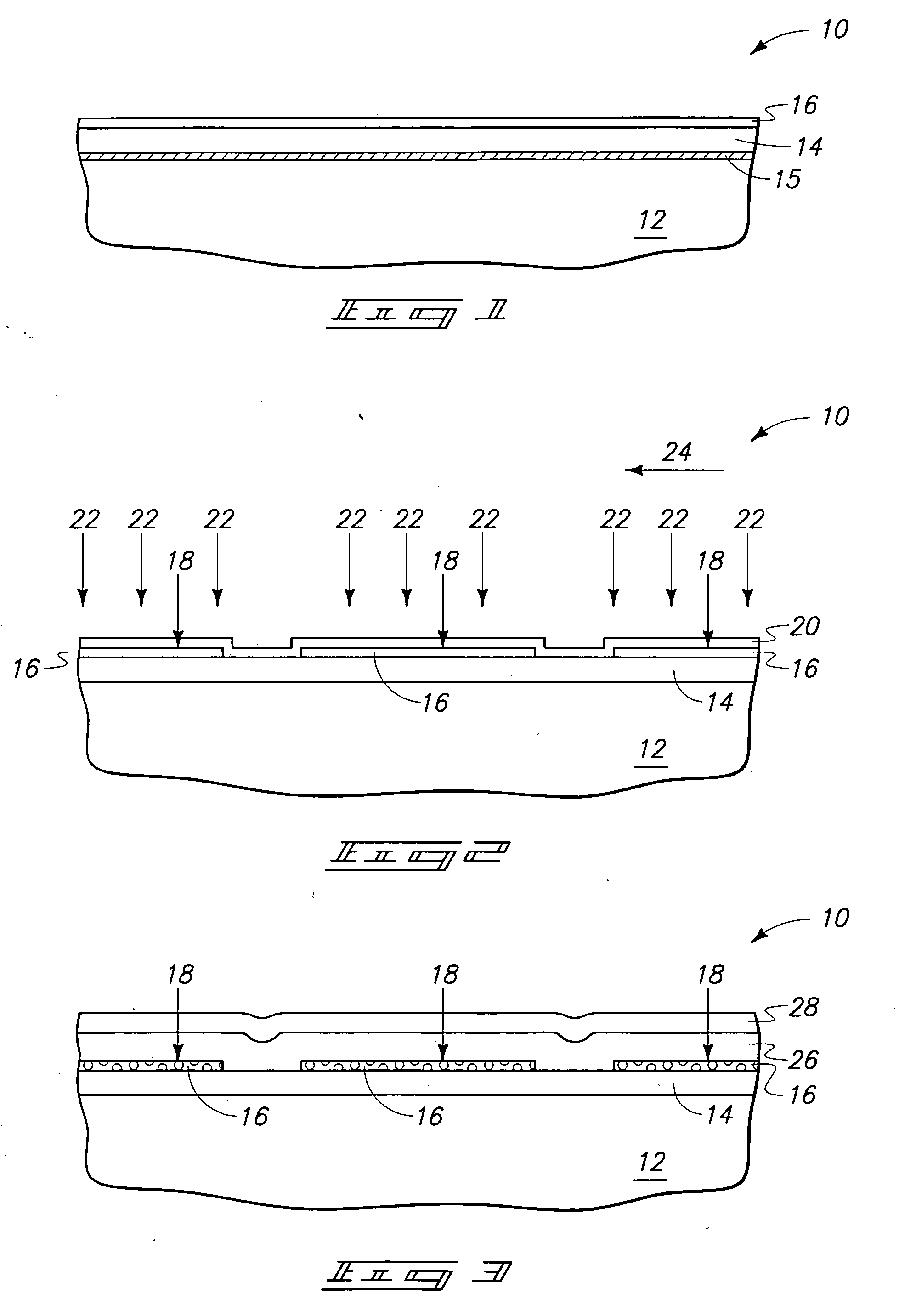Transistor constructions and electronic devices
a transistor and electronic device technology, applied in the field of integrated circuits, can solve the problems of limited performance of tfts, limited carrier mobilities, high power consumption, etc., and achieve the effects of convenient use, convenient and fast charging, and low power consumption
- Summary
- Abstract
- Description
- Claims
- Application Information
AI Technical Summary
Benefits of technology
Problems solved by technology
Method used
Image
Examples
Embodiment Construction
[0054] The invention pertains to memory devices less volatile than conventional DRAM, and in particular aspects pertains to non-volatile memory devices. In various aspects, the invention pertains to incorporation of active regions of partially-depleted SOI field effect transistor (PD-SOI-FET) devices within Si / Ge materials, and in further aspects the invention encompasses incorporation of non-volatile memory devices in SOI constructions utilizing Si / Ge as a semiconductor material. Exemplary PD-SOI-FET devices are described with reference to FIGS. 10-28. Prior to the discussion of the exemplary PD-SOI-FET devices, a processing sequence for forming and utilizing preferred Si / Ge materials is described with reference to FIGS. 1-9, with particular aspects of the invention comprising forming a PD-SOI body over any versatile substrate base, including, for example, glass, metal, plastic semiconductive materials, alumina, silicon dioxide, etc.
[0055] Referring to FIG. 1, a fragment of a semi...
PUM
 Login to View More
Login to View More Abstract
Description
Claims
Application Information
 Login to View More
Login to View More - R&D
- Intellectual Property
- Life Sciences
- Materials
- Tech Scout
- Unparalleled Data Quality
- Higher Quality Content
- 60% Fewer Hallucinations
Browse by: Latest US Patents, China's latest patents, Technical Efficacy Thesaurus, Application Domain, Technology Topic, Popular Technical Reports.
© 2025 PatSnap. All rights reserved.Legal|Privacy policy|Modern Slavery Act Transparency Statement|Sitemap|About US| Contact US: help@patsnap.com



